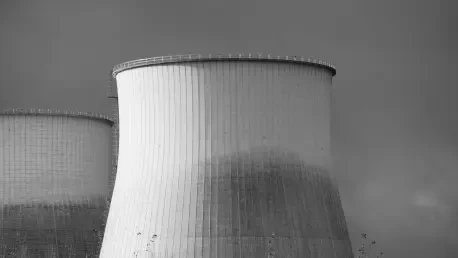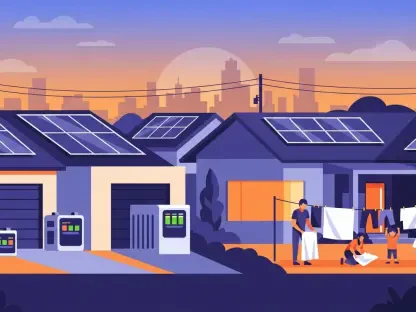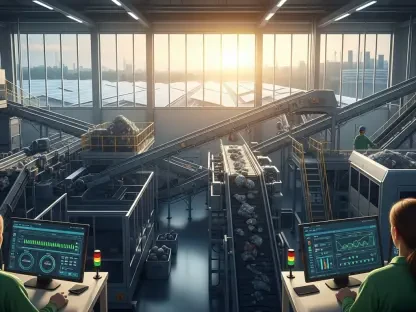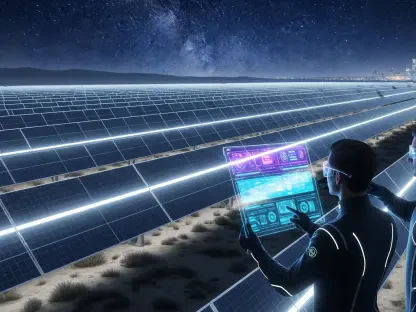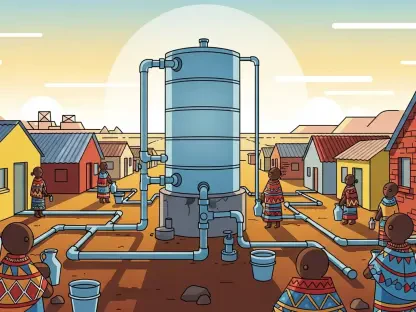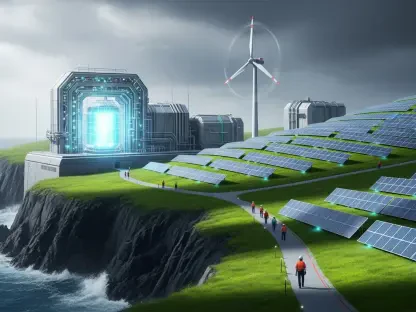In the heart of Iowa, near the small town of Palo, the Duane Arnold Energy Center stands as a silent relic of a bygone era of energy production, having ceased operations in 2020 after nearly five decades of service. Now, with NextEra Energy Resources spearheading an effort to breathe new life into this nuclear facility, a storm of controversy has erupted, pitting economic promises against grave environmental and safety concerns. This debate transcends the fate of a single plant, touching on broader questions of how society should balance growing energy demands with the urgent need for sustainability and public safety. As discussions intensify, the voices of environmental advocates, industry leaders, and local communities collide, each presenting compelling arguments that demand careful scrutiny.
The push to restart Duane Arnold has ignited a fierce dialogue about whether nuclear power can still play a viable role in a state that has embraced renewables with remarkable success. During a virtual press conference hosted by the Iowa chapter of the Sierra Club on September 29, experts and activists laid out a detailed case against reviving the plant, citing risks to health, the environment, and even economic stability. Meanwhile, NextEra Energy counters with projections of job creation and significant contributions to national energy goals. This clash of perspectives raises a pivotal question: can the potential benefits justify the myriad risks tied to bringing an aging nuclear facility back online?
Environmental and Health Concerns
Risks of Nuclear Emissions
The environmental toll of nuclear energy production remains a central point of contention in the debate over Duane Arnold’s potential restart. During the Sierra Club’s virtual event, experts highlighted how nuclear plants release over 100 radioactive isotopes into the air and water, creating pathways for these harmful substances to enter the food chain and ultimately affect human health. Historical data presented at the conference pointed to elevated cancer rates in nearby Linn and Benton counties during the plant’s active years, with increases ranging from 3.5% to 12.5% compared to national averages. Such statistics paint a troubling picture of the latent dangers that could resurface if operations resume, especially for communities already bearing the burden of past exposure. The specter of long-term ecological damage adds further weight to the argument that nuclear power may not be the clean energy solution some claim it to be.
Beyond the immediate risks of emissions, the broader environmental impact of nuclear power production cannot be ignored. Uranium mining, a necessary precursor to fueling plants like Duane Arnold, leaves behind scarred landscapes and toxic residues that persist for generations. Additionally, the high heat and water vapor discharged by nuclear facilities disrupt local ecosystems, often at a scale far greater than renewable alternatives such as wind turbines. Critics argue that these cumulative effects undermine any assertion of nuclear energy as a sustainable option, particularly in a state like Iowa, where cleaner, less invasive energy sources are already thriving. The potential for radioactive waste to linger for thousands of years only deepens the concern, as safe disposal solutions remain elusive, leaving future generations to grapple with the consequences of today’s decisions.
Long-Term Health Implications
Delving deeper into the health implications, the data shared during the Sierra Club’s discussion revealed a stark decline in infant mortality and premature births in nearby counties following Duane Arnold’s shutdown in 2020. While researchers caution that these trends require further study to isolate other influencing factors, the correlation raises significant red flags about the plant’s impact on vulnerable populations. The possibility that restarting operations could reverse these health improvements is a sobering thought for residents who have only recently begun to experience relief from such risks. This perspective underscores the human cost of nuclear energy, beyond mere statistics, as it touches on the well-being of families and future generations who may bear the brunt of exposure to unseen contaminants.
Moreover, the mechanisms by which radioactive materials affect human health are complex and often delayed, making it difficult to fully predict or mitigate outcomes. Once released into the environment, these isotopes can accumulate in soil, water, and food supplies, leading to chronic exposure over time. The National Cancer Institute’s findings from decades past, which linked proximity to nuclear plants with heightened disease rates, continue to resonate as a cautionary tale. For communities near Duane Arnold, the fear of rekindling these health challenges is palpable, especially given the lack of definitive safeguards or updated studies to assess current risks. This uncertainty fuels opposition, as many argue that no economic gain can outweigh the potential loss of public health and safety in the long run.
Safety and Infrastructure Challenges
Aging Design and Decommissioning Risks
Turning to the structural integrity of Duane Arnold, safety concerns loom large due to the plant’s outdated GE Mark I reactor design, a model notoriously linked to the catastrophic failures during the Fukushima disaster in 2011. Critics, including those from the Sierra Club, point out that this design was flagged for inadequate containment under dynamic loads as early as the 1970s by its own engineers, signaling inherent vulnerabilities that time has likely exacerbated. Having operated since 1974 with a design lifespan of 40 years, later extended by 20, the plant’s components have endured extreme conditions that may have caused unseen wear. After five years of decommissioning, the risk of failure in critical systems is a pressing worry, as restarting operations could push already compromised infrastructure beyond its limits.
Compounding these design flaws is the reality of prolonged disuse, which may have further degraded key elements of the facility. Components subjected to intense heat, pressure, and radiation over decades are unlikely to remain reliable without extensive refurbishment, a process that carries its own set of uncertainties and costs. The potential for sudden malfunctions or catastrophic breakdowns grows with each untested restart attempt, especially under the strain of modern energy demands. Safety experts argue that the inherent risks of an aging nuclear plant, particularly one with a design criticized for fundamental weaknesses, make the prospect of reactivation a gamble with stakes far too high for nearby communities to accept without ironclad assurances.
Spent Fuel Storage Hazards
Another critical safety issue lies in the on-site storage of spent nuclear fuel, a lingering hazard that has drawn sharp criticism from opponents of the restart. Housed in stainless steel canisters originally intended for short-term use, this highly radioactive material poses significant risks if the containers degrade or are compromised. The potential for leaks or even explosions in the event of structural failure is a chilling prospect, especially given the lack of a comprehensive long-term storage plan. With the plant in decommissioning status for years, questions remain about the condition of these canisters and whether they can withstand the additional stress of renewed operations or unforeseen incidents.
The absence of a permanent disposal solution for spent fuel further heightens these concerns, as the material remains dangerously radioactive for thousands of years. Critics argue that restarting Duane Arnold without addressing this unresolved issue is reckless, as it increases the volume of hazardous waste stored on-site with no clear path for safe removal. The proximity of these storage units to local communities amplifies the stakes, as any breach could have devastating environmental and health consequences. This unresolved challenge underscores a broader critique of nuclear energy: the inability to fully manage its byproducts leaves a legacy of risk that renewable alternatives simply do not carry, fueling calls to prioritize safer energy paths.
Economic and Energy Policy Debates
Nuclear vs. Renewables: A Costly Choice?
On the economic front, the debate over restarting Duane Arnold reveals a stark contrast between the high costs and long timelines of nuclear power and the proven efficiency of Iowa’s renewable energy sector. The state currently generates 79% of its energy from renewables, primarily wind, which has kept electricity costs below the national average by a notable margin. Experts at the Sierra Club’s conference emphasized that nuclear projects can take up to 20 years to complete, with expenses often ballooning far beyond initial estimates. In comparison, wind and solar initiatives offer quicker deployment and lower financial barriers, making them a more practical solution to meet rising energy demands without burdening ratepayers or taxpayers with unsustainable costs.
Further scrutiny reveals that the push for nuclear restarts, including at Duane Arnold, may be driven more by federal subsidies than by sound economic or scientific rationale. Critics describe this trend as a misallocation of resources, arguing that funds directed toward nuclear revival could instead accelerate the expansion of renewable infrastructure, which has already demonstrated success in Iowa. The notion that nuclear power is necessary to stabilize energy prices is also challenged, as data suggests that renewables have not driven up costs as some industry proponents claim. This economic disparity fuels the argument that reviving an aging plant like Duane Arnold represents a step backward, diverting attention and investment from more forward-thinking, cost-effective energy solutions.
Impact on Local Economies and Energy Goals
Beyond the raw numbers, the economic implications of restarting Duane Arnold extend to local communities and broader energy policy objectives. NextEra Energy projects that reactivation could generate millions in local revenue and create hundreds of high-paying jobs, positioning the plant as a cornerstone of economic growth for the region. Additionally, the contribution of 600 megawatts to national energy goals is framed as a vital step toward energy security, especially as demand continues to climb. For policymakers and industry advocates, these benefits suggest that nuclear power could complement renewables rather than compete with them, offering a diversified energy portfolio to safeguard against future shortages.
However, skeptics counter that these economic promises come with hidden costs that could undermine long-term stability. The history of Duane Arnold’s operation, which ended in 2020 due to unprofitability, casts doubt on the viability of sustained financial returns, particularly when weighed against the upfront investment required for safety upgrades and restarts. Moreover, the focus on nuclear revival risks diverting resources from Iowa’s thriving renewable sector, potentially stunting growth in an industry that has already lowered energy costs and created jobs. This tension reflects a deeper divide in energy policy, where short-term economic gains must be balanced against the long-term sustainability and resilience that renewables are better positioned to deliver.
Regulatory and Legal Hurdles
Gaps in Oversight and Public Trust
Regulatory challenges add a complex layer to the debate over Duane Arnold’s potential restart, with significant criticism directed at the Nuclear Regulatory Commission (NRC) for its handling of the process. A key issue lies in the absence of specific guidelines for reactivating a plant already in decommissioning status, a scenario for which current rules are primarily designed to facilitate permanent closure. Opponents argue that NextEra Energy’s pursuit of exemptions from these decommissioning regulations misuses provisions intended for rare, unforeseen circumstances, not deliberate restarts. This perceived loophole raises serious questions about whether the regulatory framework is equipped to ensure safety and accountability in such an unprecedented situation.
Compounding these concerns is the broader perception that the NRC maintains too close a relationship with the nuclear industry, often prioritizing business interests over public safety. Critics from the Sierra Club and beyond contend that this alignment creates barriers to meaningful public input, leaving local communities with little voice in decisions that directly affect their well-being. The lack of transparency in the exemption process further erodes trust, as stakeholders fear that oversight may be insufficient to address the unique risks of restarting an aging facility. Without clear, robust regulations tailored to this context, the path forward appears fraught with uncertainty, amplifying calls for a more rigorous and independent evaluation before any final decisions are made.
Legal Precedents and Community Voice
The legal landscape surrounding Duane Arnold’s potential restart also reveals deeper systemic issues that could set precedents for future nuclear projects. The misuse of regulatory exemptions, as argued by environmental advocates, not only undermines the intent of existing laws but also risks normalizing shortcuts that prioritize profit over precaution. If granted, such exemptions could weaken the broader framework of nuclear oversight, making it easier for other decommissioned plants to pursue reactivation without adequate scrutiny. This potential ripple effect alarms those who see the current situation as a test case for how seriously safety and environmental standards will be upheld in the face of industry pressure.
Equally troubling is the limited avenue for community engagement in these regulatory proceedings, a grievance echoed by many who feel sidelined in the decision-making process. The complexities of nuclear licensing and exemption requests often leave laypeople struggling to navigate or influence outcomes, despite bearing the direct consequences of any mishaps. Historical instances of regulatory leniency toward the nuclear sector only deepen this distrust, as past oversights have sometimes led to preventable risks. For the residents near Duane Arnold, the fight is not just about one plant but about ensuring that their health, safety, and voices are not sacrificed in the rush to meet energy or economic targets, pushing for reforms that would strengthen public participation in such critical matters.
Weighing the Future of Energy Choices
Reflecting on the heated discourse surrounding Duane Arnold, it becomes clear that the decision to restart has stirred profound divisions among stakeholders, each grappling with the weight of past lessons. Environmental and health risks have been meticulously documented, with historical data on cancer rates and post-shutdown improvements painting a cautionary tale of nuclear power’s hidden tolls. Safety debates have exposed the vulnerabilities of an aging GE Mark I reactor and the lingering hazards of spent fuel, while economic critiques have questioned the wisdom of investing in nuclear over Iowa’s proven renewable successes. Regulatory shortcomings have further muddied the waters, revealing gaps in oversight that leave public trust frayed.
Looking ahead, the path forward demands a rigorous, transparent evaluation of all risks and benefits before any final call is made on Duane Arnold’s fate. Comprehensive health and environmental impact studies should be prioritized to address lingering uncertainties, while updated safety assessments must ensure that aging infrastructure can withstand modern demands. Policymakers and regulators are urged to close the gaps in current guidelines, establishing clear protocols for restarting decommissioned plants to prevent misuse of exemptions. Engaging local communities in meaningful dialogue will be crucial, ensuring their concerns shape outcomes rather than being sidelined. Ultimately, the decision must weigh whether nuclear revival aligns with long-term sustainability goals, or if Iowa’s renewable trajectory offers a safer, more resilient blueprint for meeting future energy needs.
